This will be the last post from Ometepe. We are moving off-island to visit other parts of Nicaragua. I will use this post to flesh out info about Merida, Ometepe, and provide you with more photos and sound files.
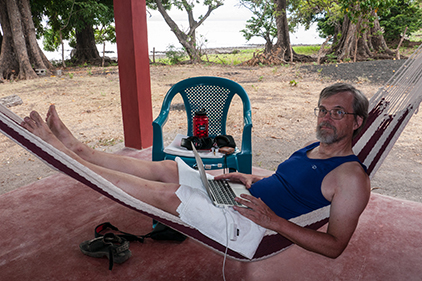
The noble blogger at work on a hot day in Merida, with all of his toys readily at hand.
Merida is not a posh resort area. It is very rural, one might say poor. The road through town, though there are plans by the national government for paving it, is currently rough—rock and dirt, especially dusty at the end of the dry season (see my previous post). All of the pathways are dirt.
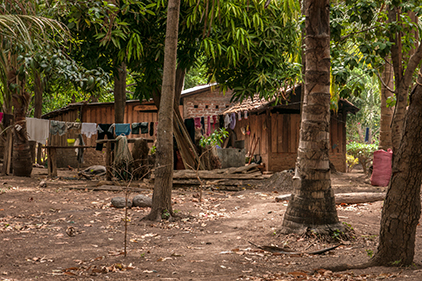
The house of one of the young adult English students.
For the 1500 people who call Merida home (most of whom were born and raised here), walking is the prime means of getting around town, with second being bicycle—most bikes are “one-size-fits-all” in that you will see small children riding a bike way too big for them. And two or more people are often seen on a bike built for one. There are a few pickup trucks, all not new, and dirt-bike-style motorcycles.
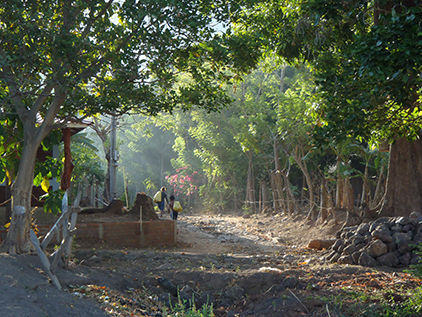
Two kids in the early morning walking on one of the paths through town, carrying the laundry back from being washed in the lake. It will be hung out to dry.
A mix of sounds heard at dawn in Merida.
The other non-motorized means of getting around is horse. Most of the local horses are smaller than I am used to seeing back in the United States. There is at least one horseback-riding tourism business.
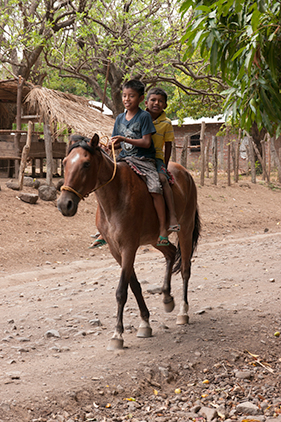
Two boys ride a horse along “main street.”
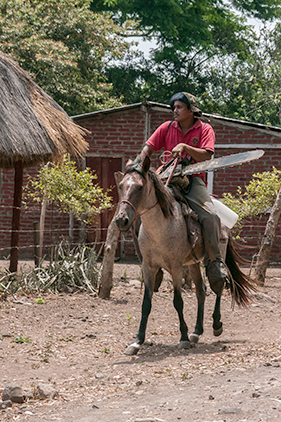
Man and chainsaw on horse.
There is even an oxen that is used as saddle stock, to go with the two oxen that pull a cart.
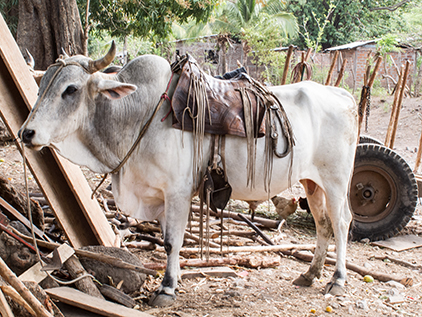
An ox saddled for riding.
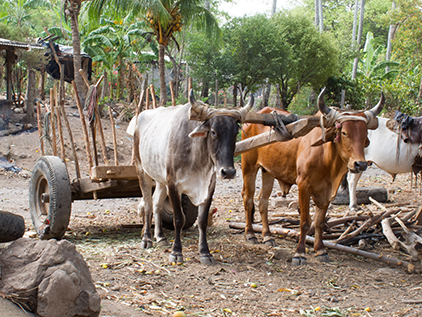
Two oxen harnessed to pull a cart.
Houses are of concrete block or locally made brick. All the houses have barbed wire fences around their dirt “yards.” This is meant to keep out horses, cows, oxen, and pigs, which tend to be able to travel freely around the village.
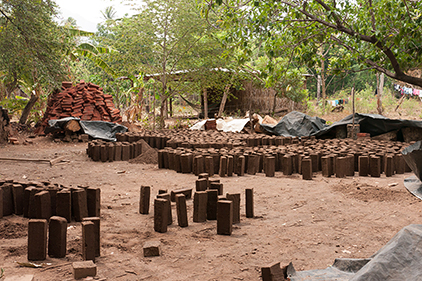
Bricks drying before firing.
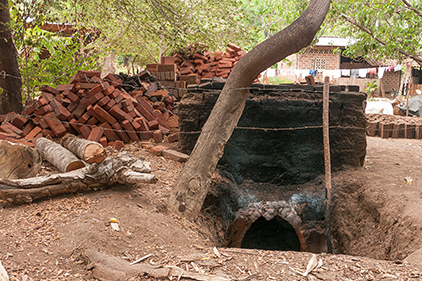
The firing pit for brick-making.
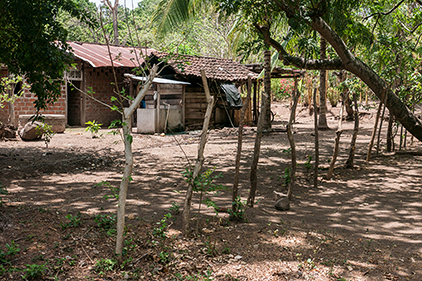
A typical barbed-wire fence around a house, meant to keep out the roaming oxen, cows, pigs and horses.
The Great-tailed grackle has a repertoire of a dozen or more calls and songs. I’ve sprinkled this post with three examples, all made by the same species of bird.
A grackle, sounding like an electronic alarm of some sort.
Clothes washing is ALL done by hand (no one in Merida has a washing machine). Washing is done in the lake, usually in the morning, always by women, some of whom sell their clothes-washing services. The lake is also where some folks bathe. Especially toward the end of the dry season, water from taps is frequently unavailable. All of the water that comes out of faucets had fallen on the slopes of the Maderas Volcano.
At the end of the dry season, there has been no rain to speak of for months; the water table was low. On one of those days when there was no water in my daughter’s house, we also bathed in the lake.
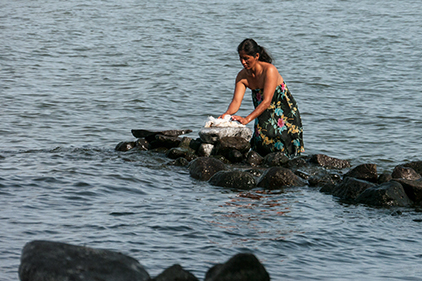
A woman hand-washing laundry in the lake. All laundry in Merida is washed this way.
The pretty call of a wren.
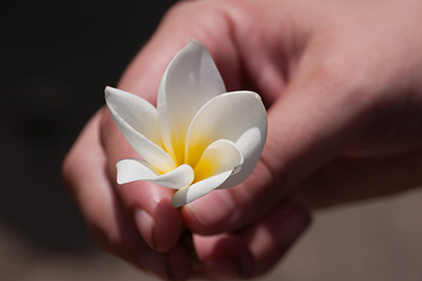
Being the dry season, there were few flowers blooming. This was a pretty one that fell from a small tree.
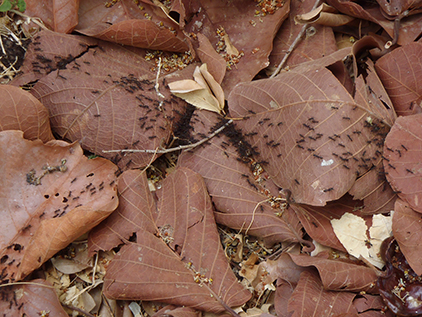
Ants—according to what we were told, the ants were getting ready for the rainy season by moving their nest to higher ground.
A short grackle call.
All cooking is done by wood because propane is expensive, though my daughter has a two-burner propane cooking surface because her house is a rental.
As for destination tourism, there are three rustic hotel/lodges and some individuals who have extra houses and rent them to visitors. There are restaurants at the hotels and a couple other smaller restaurants, three or four tables run by families. These businesses support many local people as staff, including guides for hiking trips, such as up the Maderas Volcano or out to the “Swamp.”. Kayaks can be rented in a couple places in Merida.
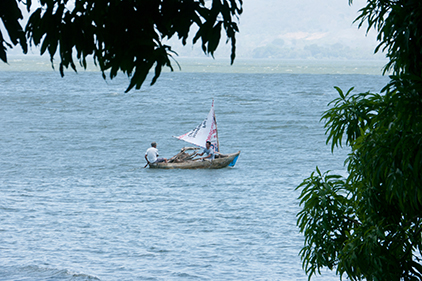
A fishing boat carries wood back home to use for cooking.
Unknown bird flying by my unattended microphone. Even when I was holding the mic, I usually only heard the birds and seldom saw the bird that was calling or singing.
Rice and beans are a staple of the local cuisine, that and some spices, and don’t forget the tortillas.
I think this sounds like a tiny toy trumpet, but it comes from the grackle.
Here are some of the locally popular foods I ate:
—fried flour tortilla (the frying puffs them up) topped with refried beans, cheese (not sure what type), shredded cabbage, and diced tomato.
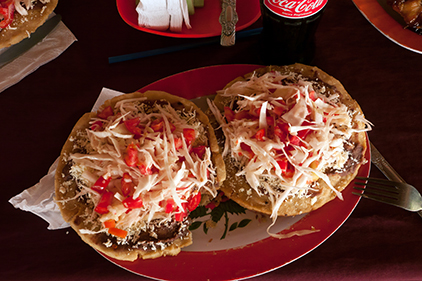
—boiled in banana/plantain leaves, pork, chicken, or beef.
—re-cooked and sightly dried rice, with beans and onion, but there is more to the preparation.
—eggs. A good source of protein, readily available and inexpensive.
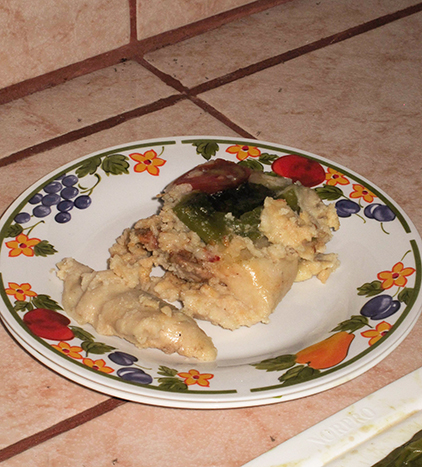
—plantain—two varieties, one sweet and one more like a potato in flavor, just starch.
—chicken
—pork
(in tacos)
—fall from trees daily.
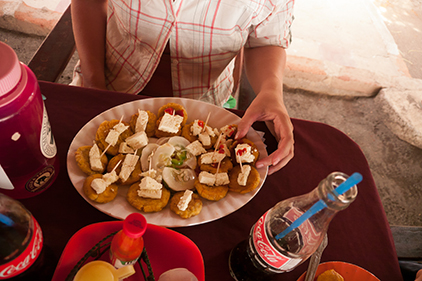
Patacones con Queso
—smoothies—especially one with site-made coconut ice cream, banana and piña
—CocaCola (because it’s a cold liquid)
—coconut milk; with a straw, fresh from a newly cut down coconut with a hole in the end
—fall from trees daily.
—avocado; much larger than we can find in Alaska, even in our dreams.
—pineapple; white, not yellow.
—coconut ice cream.
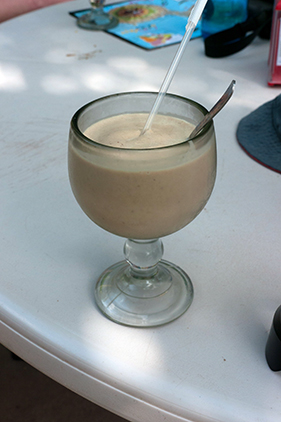
Batidos—A coconut ice cream, banana, pineapple smoothie
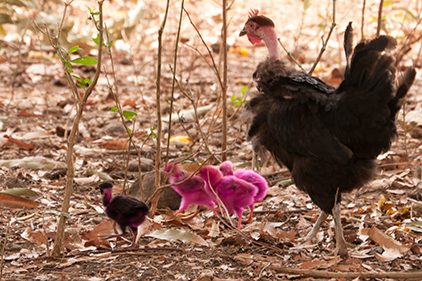
With so many chickens running loose in Merida, owners take to spray-painting the chicks, so whom they belong to can be easily determined.
The last night in Merida, a thunderstorm cell moved through and rained hard. The first good rain in months, but it was isolated, and not a distinct shift to the rainy season.
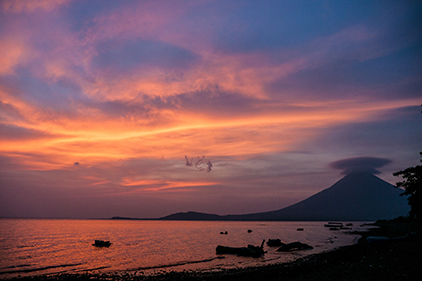
A colorful sunset with a cute little cloud hat perched atop the Concepción Volcano.
Heavy rain beating on the tin roof of the house, as recorded on the porch. The thunder roll was one of many that added audio to the frequent cloud-illuminating lightning flashes.